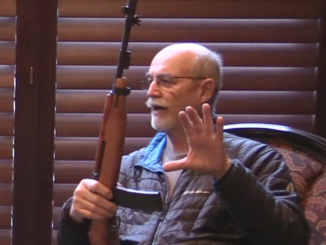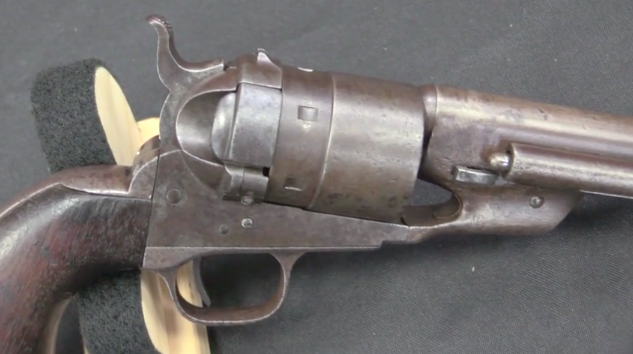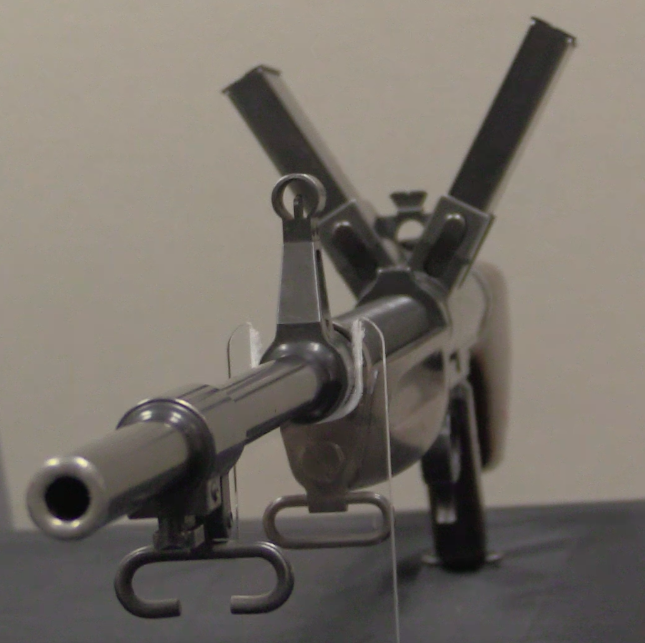The AR-15 rifle was originally developed by Armalite as an offshoot of the AR-10 rifle designed by Eugene Stoner. How that second-thought rifle became the US standard military rifle – and the longest-serving infantry rifle in US military history – is a winding story. From Armalite’s sale fo the design to Colt to sales trips to India and the Philippines to an Air Force general’s birthday party, we will follow that story today. We will focus on the Colt Model 601; that company’s first export-model AR rifle, and how it changed as it was adopted by the US Air Force and then the US Army.
Many thanks to Movie Armaments Group in Toronto for the opportunity to showcase these early AR15s for you! Check them out on Instagram to see many of the guns in their extensive collection.




An excellent history lecture by Ian. Most noteworthy is mention if personal connections and casual undertakings (such as party for Lemay) which led to course of events with far reaching consequences.
“(…)party(…)consequences(…)”
This reminded me about how Charles Parsons advertised his turbine to Royal Navy during Queen Victoria’s Diamond Jubilee (1897): https://spectrum.ieee.org/tech-history/dawn-of-electronics/this-british-family-changed-the-course-of-engineering
Going way off the reservation, but family history says my grandpa beat LeMay at poker on Lemay’s plane (perhaps on the way to or from Thule AB, which grandpa was in charge of building). Apparently Lemay was not a gracious loser at poker…big surprise.
Looks like the shape of the buttstock also changed a bit.
Also: just think how much money, material, time, and effort have been spent over the years to make millions of rifle parts for that forward assist.
Ouch!
That forward assist that Stoner disapproved of
A device for shoving a case that wouldn’t fit into the chamber
Into the chamber, so tight that it wouldn’t extract?
Blame the idiots who were stupid enough to get thick mud into their fully loaded magazines. “When I ask you to hide, I don’t ask you to nearly drown yourself in a peat bog.”
A friend of mine said that they were taught the correct use of the forward assist in AIT. According to him, it was to be used only to ensure that the bolt was completely closed when the rifle was heavily fouled from extensive use of M193 ball without cleaning. Meaning, if the bolt stopped just short of full lockup, the assist was used to shove it in the last few millimeters until it was in battery.
Also according to him, the only mention of damaged or distorted rounds was “eject it and reload with an undamaged cartridge”.
Seen in this light, the forward assist makes a bit of sense. But as he said, keeping the rifle clean inside makes a lot more sense.
cheers
eon
Mind you on SA80 the drill was wack the bolt handle forward; forward assist each prior to firing, same bolt design… Overall, albeit in a more tubular configuration.
Maybe it needed one.
That was doctrine with the M1 Garand, M1 Carbine, and M14. Ensure the bolt fully seated if it didn’t *quite* go home by whacking the reciprocating charging handle.
Guns that didn’t have reciprocating charging handles were generally noted by Army Ordnance types as being deficient in this regard, compared to guns that had it.
Personally, the only time I used it (outside of the SPORTS drill we were ordered to use for immediate action) was to ensure the chamber closed after a chamber check.
I have just returned to Australia, within my emails there are a large number purporting to have come from this site. All headed ‘new comment’, all with a very similar syntax, different email addresses, all praising the site, and all having a reply box on the left had side. These I have all removed without doing anything with the message.
The green furniture. This rifle finally has appeal.
It is direct impingement though isn’t it. (Is it?) In that, if the bolt was in battery say with the top cover off; you hit the gas key with a hammer thus moving the bolt carrier back, that motion rotates the bolt via the bolt cam pin and thus it unlocks.
The idea of the gas going into the bolt carrier, hitting the gas rings on the bolt, then pushing the carrier back; is a delay mech due to the seven lugged rotary bolt face having a shorter surface area to turn in than say an AK with fewer but wider lugs.
Those bolt lugs being taken from the Johnson rifle with bumped a cam stud off a ramp on the ejector port, a small incline which needed a short surface area; hence 7 small lugs not two big ones for example.
Happy new year, he he.
In that if it didn’t do the gas thing inside the bolt, the short rotational surface area of the lugs would mean it opened too quick; if normal direct impingement was used. That is not to say, it is not direct impingement. It is, but delayed.
“Johnson rifle (with) bumped” with, should be which. Correction.
FWIW: It was former Fairchild president Richard Boutelle’s birthday party (July 4th). Boutelle was fired shortly before the Colt licensing deal was finalized. They gave him a position on the board of directors to soften the blow, but he quickly quit that.
Are those royalties still being paid?
No, the patents have long since expired. Colt had agreed to pay Cooper-Macdonald through the life of the original patent (including any renewals), but ending no later than January 6, 1979. Presumably the same was true with Fairchild.
When President Kennedy was assassinated on 22nd November 1963, the Secret Service had an AR15 in the backup car. At such an early date, it may well have been one of these Colt 601 rifles. It is interesting that the Secret Service adopted such an advanced rifle so soon.
The Zapruder film seems to show that President Kennedy’s head was hit by a high velocity round, more like a 5.56mm that the 6.5mm Carcano. This has led to a theory that the president may have been accidentally shot by one of the Secret Service agents, but it is not something which I can accept, as I think the many witnesses would have noticed such a shocking event.
There was a noticable “splat” though, RIP. Long elongated 6.5mm hitting; kind of slowing down, wobbly bullet… Side on type thing.
As oppose point blank “crack!” small fast bullet, wouldn’t it have just punched “paper” neat etc.
Theres a “disconcerting” potential inrange vid; splat, or spleen the magic bullet. No, fair enough.
I’ve seen extremely close range hits with M193 — the ammo the USSS would have had loaded in an AR15 in 1963 would have been even more so.
The wounds on Kennedy are *not* indicative of a .223 light ball round at loogie-spitting range.